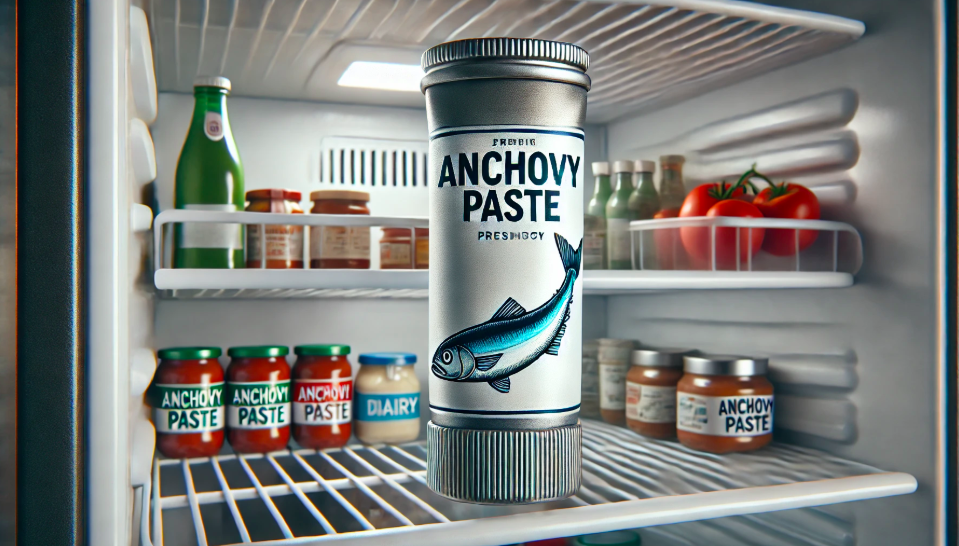
The shelf life of anchovy paste depends on whether the tube is opened or unopened and how it is stored. Proper storage plays a crucial role in maintaining its freshness and safety for consumption. Here's a detailed breakdown:If kept in a cool, dry place, unopened anchovy paste can last for up to two years from the production date.
What Is Anchovy Paste And Its Common Uses?
Anchovy paste is a thick, concentrated condiment made from ground anchovies, salt, and occasionally additional ingredients like vinegar or oil. Its flavor is intensely savory and salty, packed with the umami taste that enhances various dishes.
Common Uses of Anchovy Paste:
- Cooking Sauces: Anchovy paste is widely used to add depth and complexity to sauces like marinara, puttanesca, or even beef-based gravies.
- Salad Dressings: A key ingredient in Caesar salad dressing, anchovy paste provides the signature tangy and savory flavor.
- Soups and Stews: Adding a small amount of anchovy paste to soups or stews can boost their umami flavor without overpowering the dish.
- Spreads and Marinades: It can be mixed into spreads for sandwiches or blended into marinades for meats and seafood.
- Pizza and Pasta: Anchovy paste is frequently used as a topping or ingredient in pizza sauces and pasta dishes, where it melts seamlessly into the recipe.
How To Properly Store Anchovy Paste In The Fridge
Storing anchovy paste correctly is crucial for preserving its flavor, texture, and safety. Follow these steps to store your anchovy paste properly:
Refrigerate Immediately After Opening:
Once the tube is opened, always refrigerate it. The cold temperature helps slow the growth of bacteria and prevents spoilage.
Seal Tightly:
Ensure that the tube or container is tightly sealed after each use. If the original packaging cannot be sealed properly, transfer the paste into an airtight container.
Prevent Contamination:
Always use clean utensils when scooping or applying anchovy paste. This minimizes the risk of introducing bacteria or mold into the tube.
Optional Submersion in Oil:
Some people choose to add a thin layer of olive oil on top of the paste in a container. This helps block air exposure, keeping the paste fresher for longer.
Placement in the Fridge:
Store the anchovy paste in the coldest part of the fridge, such as the back of the middle or lower shelves, rather than in the door where temperatures fluctuate.
By following these storage techniques, you can prolong the shelf life of your anchovy paste and maintain its quality.
Signs That Anchovy Paste Has Gone Bad
- It’s important to recognize when anchovy paste is no longer safe to consume. Here are the key signs that the paste has gone bad:
- Fresh anchovy paste has a strong but clean fishy aroma. If the paste develops a sour, rancid, or otherwise off smell, it has likely spoiled and should be discarded.
- Normal anchovy paste has a reddish-brown or dark brown color. If the paste turns an unusual color, such as a greenish or yellowish tint, it may be a sign of mold or oxidation.
- Spoiled anchovy paste might appear watery or overly dry, indicating it has lost its quality.
- Any visible mold growth inside the tube or on the paste means it must be thrown away immediately.
- If the paste has been stored for a long time past its recommended shelf life, it’s best to err on the side of caution and discard it, even if no visible signs of spoilage are present.
Can You Freeze Anchovy Paste For Longer Shelf Life?
Yes, anchovy paste can be frozen to extend its shelf life, though freezing is not always necessary due to its already long refrigerated lifespan. If you decide to freeze it, follow these tips:
Portion the Paste:
Divide the paste into small portions before freezing. This way, you can thaw only what you need without defrosting the entire batch.
Use Airtight Containers:
Place the paste in small airtight containers or wrap it tightly in plastic wrap, followed by aluminum foil, to prevent freezer burn.
Label and Date:
Clearly label the container with the date of freezing. While anchovy paste can last up to three months in the freezer, using it sooner ensures better flavor.
Thawing Instructions:
When you’re ready to use frozen anchovy paste, transfer it to the fridge to thaw overnight. Avoid thawing it at room temperature to prevent bacterial growth.
By freezing anchovy paste, you can enjoy its flavor in your recipes for an extended period without worrying about spoilage.
What Happens If You Use Expired Anchovy Paste?
- Using expired anchovy paste can pose potential health risks, depending on how long it has been expired and the storage conditions. Here’s what could happen:
- Expired anchovy paste may lose its savory taste and take on a sour or unpleasant flavor, ruining your dish.
- If the paste has spoiled, consuming it could lead to foodborne illnesses caused by bacteria like Listeria or Salmonella. Symptoms may include stomach pain, nausea, vomiting, or diarrhea.
- The paste may become watery or lumpy, which can make it unappetizing and difficult to use in recipes.
How To Read Expiry Dates On Anchovy Paste Packaging
Anchovy paste packaging typically includes a “Best By,” “Use By,” or “Best If Used By” date. Here’s how to understand these labels:
Best By Date:
Indicates the period during which the product is expected to remain at peak quality. It does not necessarily mean the paste is unsafe after this date.
Use By Date:
Suggests the last date for the product to be consumed for the best flavor and quality. Products should generally not be consumed after this date.
Production Date:
Some packaging includes a production date, which helps calculate the product's overall shelf life.